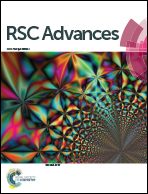Surface-enhanced Raman scattering based lateral flow immunochromatographic assay for sensitive influenza detection
Abstract
A sensitive surface-enhanced Raman scattering-based lateral flow immunochromatography test system (SERS-LFIA) was developed using multi-branched gold nanostars (AuNS) coated with a Raman active molecule, 4-aminothiophenol (ATP), as a signal reporter. The unique characteristic of the AuNS having multi-arms and surface roughness features allows high SERS performance in the system to be achieved via the increased bioconjugation sites and hot spot regions. To demonstrate the system performance, influenza A nucleoprotein was used as the target molecule. After a facile one-step synthesis, AuNS was tagged with the ATP molecule and conjugated to the antibody specific to influenza A nucleoprotein, and then used as both the SERS signal reporter and the detection probe in the system. It was demonstrated that the lower limit of detection using visual and SERS detection was 67 and 6.7 ng mL−1, respectively. With the SERS detection signal, the detection sensitivity was significantly improved approximately 37 and 300 fold, as compared with fluorescence-based and conventional LFIA, respectively. The integrated SERS-LFIA platform reported here demonstrated an ultrahigh detection sensitivity, which could potentially facilitate a sensitive point-of-care test for diagnosis in many diseases.


 Please wait while we load your content...
Please wait while we load your content...